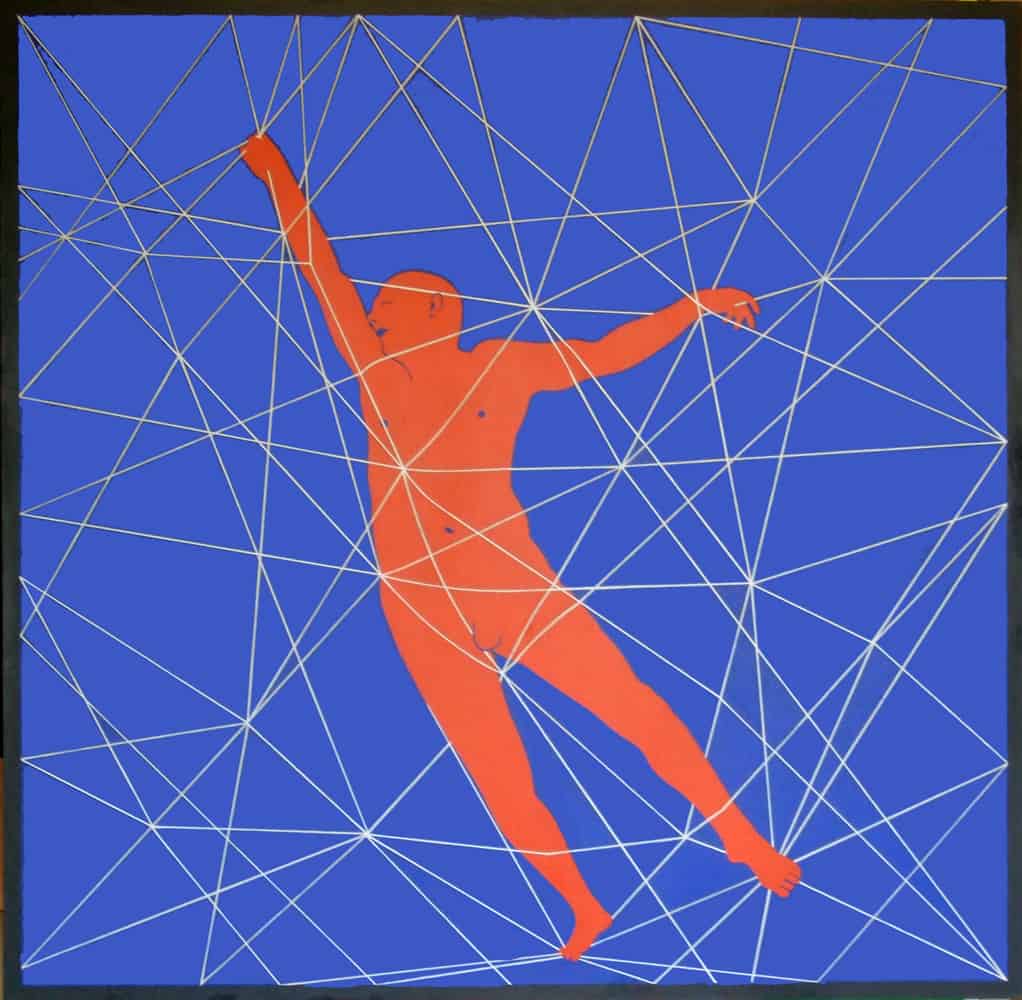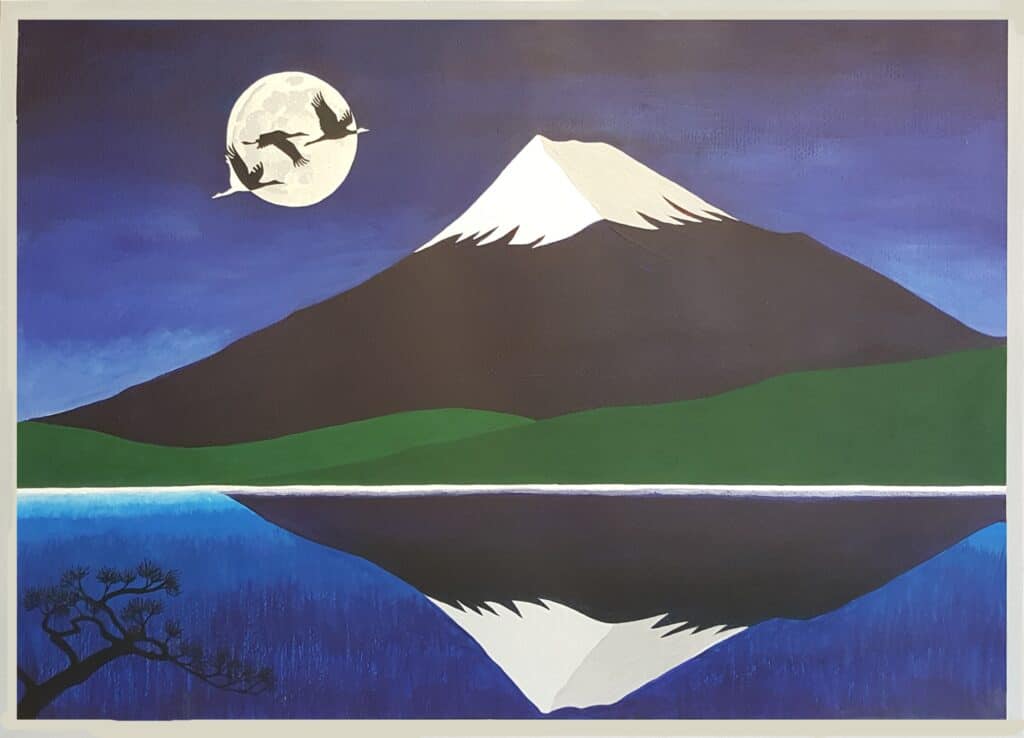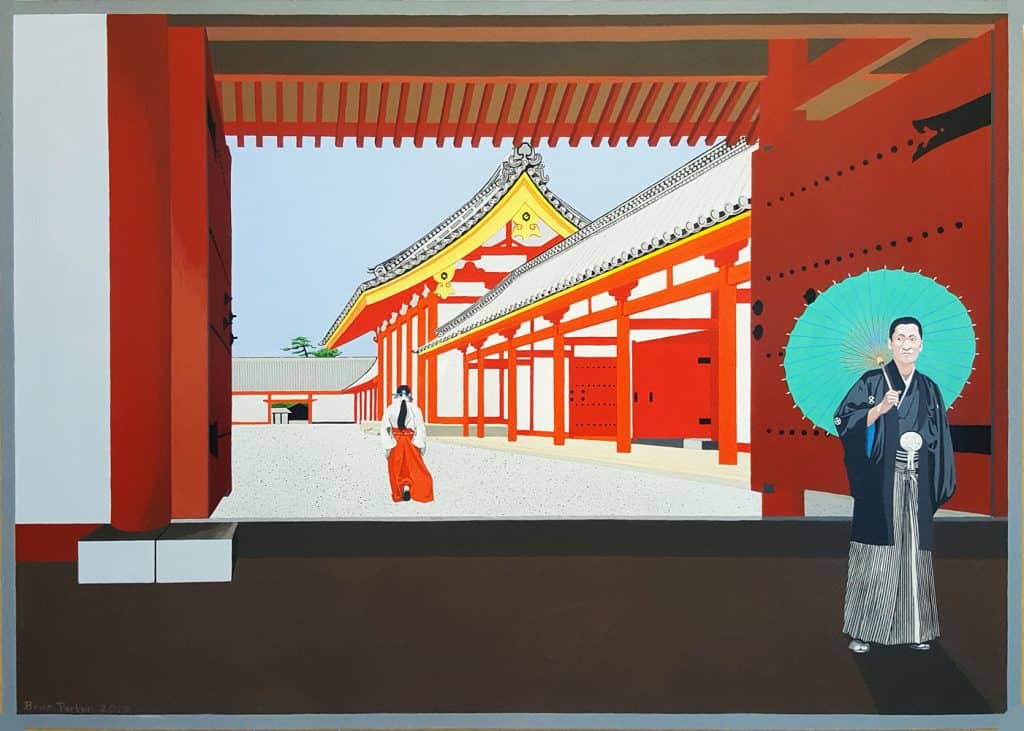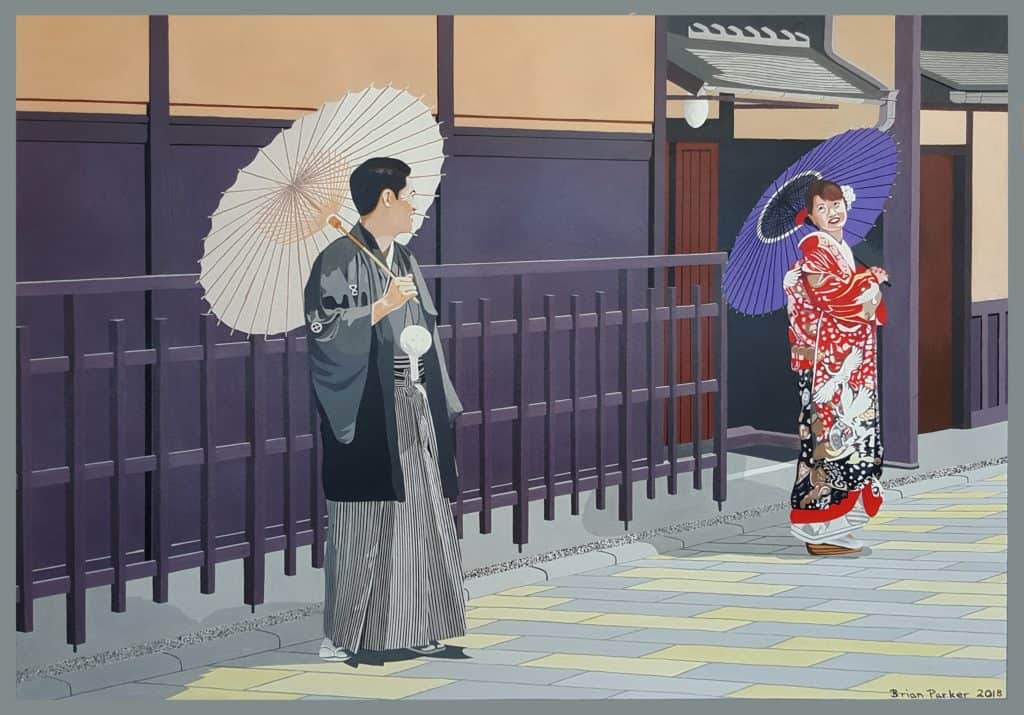Every artist, no matter their medium, is influenced by something: music, architecture, contemporaries or long-dead masters. As a visual artist, I’m intrigued, inspired and influenced by what I see, and Japanese art is among the styles that can really get my juices flowing.
With roots dating back to 3,000 years BC, Japanese arts cover every possible creative facet, from exquisite woodblock prints, ceramics and textiles to the ancient art of origami and the in-your-face world of manga.
In this blog, I’ll take a closer look at this fascinating country’s art, showcase some of the creators that interest me, and explore which of my works have been inspired or influenced by Japanese art.
The ancient Japanese culture
In around 10,500 BC, the Jomon people first settled the country we know today as Japan. They may have been simple hunter-gatherers but they created lavishly decorated ceramics and pots, regarded as some of the world’s oldest.
Like many countries, each successive wave of immigrants to Japan brought with them their own art and influences. In the 8th and 9th centuries, the introduction of Buddhism and the integration of Chinese culture made their mark.
As the centuries passed, rulers such as the Fujiwara family put their stamp on the country through iconic architecture and sculpture – just look at the Unkei’s dynamic supra-realistic style.
From shifting sands to a modern and contemporary art leader
Religion, the military, the shifting sands of power and government all had a role to play in the development and evolution of Japanese art.
Buddhist art, the cultural expression of the Samurai class, the ink painting of the Muromachi period, the seismic changes of the Ashikaga period, imports of Chinese paintings and the relative stability of the Azuchi-Momoyama period all led to the golden years of the Edo period, which ran from 1603 to 1867.
It produced hugely popular ukiyo-e paintings and woodblock prints, as well as the boom in Japanese porcelain and lacquered furniture.
As the 19th century rolled on, the influence of Western cultural values permeated the Japanese art world, particularly after World War II, fuelling artistic innovation across art forms that continues to this day.
Popular Japanese Artists

Having such a rich artistic heritage means art has become a core part of Japanese history and its culture, a deep well to draw on and be inspired by.
It has produced several major Japanese artists across many disciplines who have embraced Western styles and created something new, or reached back into their country’s past and put their own twist on it.
The Japanese art world is among the most exciting, thought-provoking and interesting, so it’s no surprise that it forms the basis for so many international exhibitions. Here are just a few names I think you should watch out for.
Chiharu Shiota
As a dancer and someone who is fascinated by the forms our bodies take when in motion, performance and installation artist Chiharu Shiota’s works are of particular interest to me.
She fills spaces with thousands of black, white or red threads, carefully tied together and sometimes with personal objects embedded within them.
They evoke my work Dancing the Nexi, which was taken from a still from a video of me dancing while suspended in a network of string.
Yayoi Kusama
This avant-garde artist may have made a name for herself with her Infinity Mirror Rooms, but I’m drawn by her use of psychedelic colours, pattern and repetition.
You can find echoes of her ‘Infinity Nets’, paintings of loops and dots, in my geometric works, particularly the Bubble and Squeak series.
Masanari Murai
Bold geometric patterns, vivid colour and arresting slashes of black are often seen in contemporary painter Masanari Murai’s works, which once seen are rarely forgotten.
I’m irresistibly drawn to the order within the chaos of his paintings, which put me in mind of my Redblackbeige series.
Fuji and famous art prints

No exploration of Japanese art would be complete without examining the role of nature and the country’s iconic Mount Fuji, which has been painted endlessly by artists from across the globe – myself included!
Hokusai, the man behind arguably the most famous Japanese artwork of all time, The Great Wave off Kanagawa, was active during the Edo period.
The artist, ukiyo-e painter and printmaker also created the woodblock print series Thirty-Six Views of Mount Fuji, which depicted the landmark from several angles, in different weathers and seasons
Japanese painting and culture
Since he put ink-covered block to paper between 1830 and 1832, artists the world over have done their best to produce their own views of Mount Fuji, as well as capture the delicate beauty of Japan’s natural world and everyday life.
Anyone who has ever visited Japan will understand it is a rare place, one where the ancient can be a hair’s breadth from the present day, and yet somehow remain separate.
Startling commute
I captured such a moment when I saw a young Buddhist monk rushing to start his day at the temple, while passing an avenue of lamps.
It brought home just how old Japanese culture is, and how the very different can exist, cheek-by-jowl with the modern.
The influence of Japanese art on me

My time in Japan had quite the impact on my art, and the more I look the more I see it. For example, the elegant lines of Japanese architecture have informed paintings beyond the series inspired by my visit.
It’s easy to look at Temple of Light and know where I am in the world, but the sharp, clean lines of my works Beach Shelter or Rhapsodic, although they are thousands of miles away, also echo the simplicity of Japanese buildings.
Colourful echoes and new Japanese artists
The repeated patterns of sombre colours of Kyoto Joy juxtapose with the unexpected burst of purple from the bride’s umbrella, is somewhat reminiscent of Murai’s work, while the cartoon colours of my contemporary paintings carry a hint of Takashi Murakami.
Of course there are other influences firing my artistic synapses every day, but Japanese art will always occupy a corner of my heart like no other.
I’ll always be glad I visited the country to experience it for myself and perhaps I’ll go back one day. Until then, I’ll continue to be inspired and delighted by this truly fascinating country.





